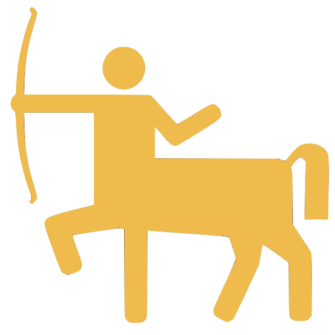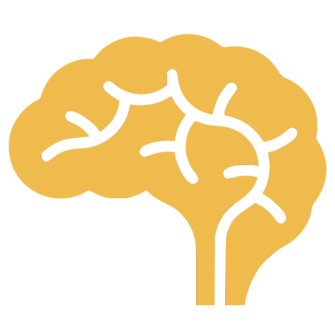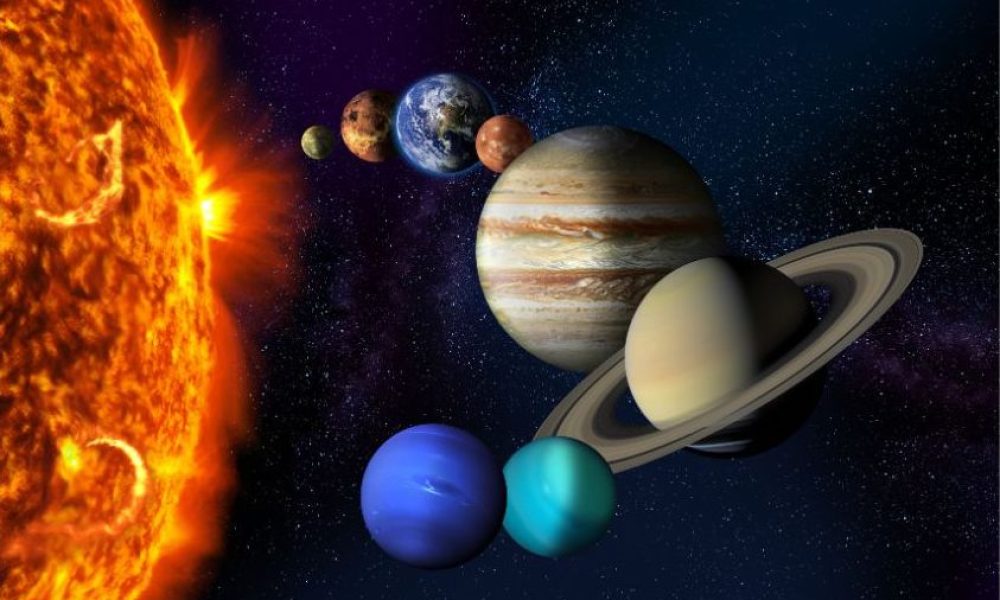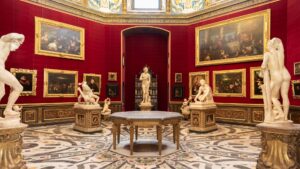The Romans strategically named each planet in the solar system after their gods (and one Greek god), aligning the planets’ traits with those of the gods. Let’s find out how!
Note:
- Uranus and Neptune were not named by the Romans (The Romans only knew of the first 5 planets – Mercury, Venus, Mars, Jupiter, Saturn – and the sun and the moon). But it had become a trend to name celestial bodies after Roman gods.
- The Romans were not the only ones who observed and named celestial objects after their gods. Earlier peoples did too, such as the Ancient Egyptians, Ancient Greeks and Hindus. Romans are the closer descendants of the modern West, which is most likely why we stuck with the Roman names.
- In the breakdown below, I’ve also included the earlier Greek version for each god. For some of us (😅), this might make it easier to visualize the god.
Mercury
Planet fact:
Smallest and fastest planet of our solar system
God fact:
Mercury / Hermes is the messenger god who swiftly travels from one place to another to relay messages.
Venus
Planet fact:
Venus is the hottest planet and brightest object in the sky, after the sun and the moon.
Goddess fact:
Venus / Aphrodite is the goddess of beauty. She shines.

Earth
“Earth” is not a Roman god’s name. For some reason, Anglo-Saxons didn’t stick with the Roman name (“Terra”) as they did for other planets. But other Europeans did, such as the French (to them, ‘Earth’ is Terre), Italians (Terra) or Spanish (Tierra).
Planet fact:
As you must know, the “Earth” is the only planet with known life.
Goddess fact:
Terra / Gaia is the ancestral mother of all life.

Mars
Planet fact:
The planet Mars has a red appearance due to its high quantity of iron oxide.
God fact:
Mars/ Ares is the god of war, bloodshed and violence. Get it? Blood? Red ? 😅
Planet Jupiter
Planet fact:
Jupiter is the largest and oldest planet of the solar system. It can fit 1300 earths inside of it!
God fact:
Jupiter / Zeus is the king of all gods.

Planet Saturn
Planet fact:
Saturn is a very unique planet as it has a ring around it (but the Romans didn’t know that). It is the second largest planet after Jupiter.
God fact:
Saturn / Cronus is the god of harvest and time. He was overthrown by his son, Jupiter/Zeus. Various theories exist for the naming of the planet Saturn, and one of them is that Saturn was the slowest planet (at the time of naming) and therefore linked to time.

Planet Uranus
Planet fact:
Uranus is an ice giant that spins on its side. It’s the third largest planet and the coldest planet (-224 ℃). It appears blue because of its methane.
(Greek) God fact:
Uranus is a primordial deity and represents the sky. He is the father of Saturn/Cronus (he was mutilated by him) and the grandfather of Jupiter/Zeus. Sources say that when German astronomer Johann Elert Bode discovered the planet, it only made sense to name it after the father of Cronus. So the sequence went like this: the giant planet Jupiter, then his father Saturn (Cronus), and then his grandfather Uranus.

Planet Neptune
Planet fact:
Neptune is another ice giant. It is cold and dark. It has the most powerful winds, and is bluish in colour.
God fact:
Neptune / Poseidon is the god of bodies of water and the bringer of winds and storms.














